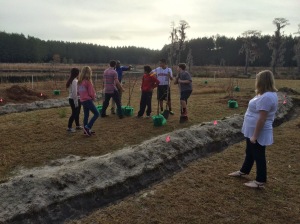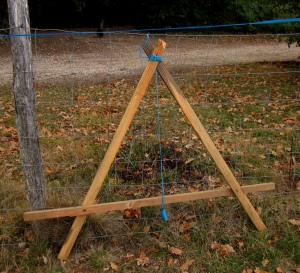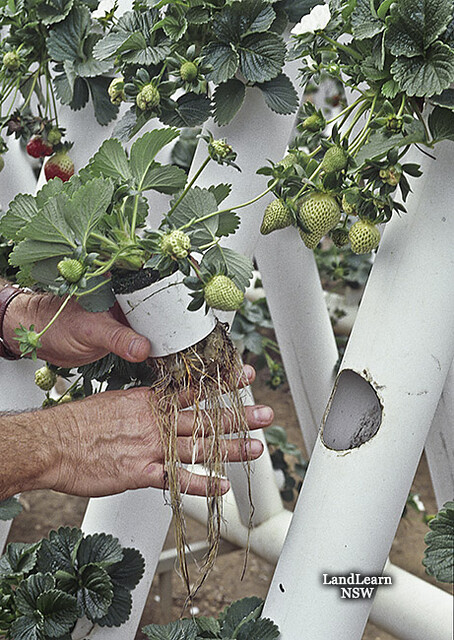Fungi also known as Mycelium are eukaryotic organisms. Fungi can be single or multi-cellular organisms. Don't get all grossed out, but most of the things you eat have some sort of fungi in it like bread, wine, and solvents. Believe it or not fungi are not plants. Living things are classified into kingdoms.
Thursday, September 24, 2015
Thursday, September 10, 2015
7 Layer Food Forest
Posted by
Unknown
at
9/10/2015 02:03:00 PM
If you've ever been able to enjoy a walk in the woods, you've probably never come across someone watering the trees in the middle of the woods. Why is that? Do the trees in the woods need water? What about nutrients to grow? Where do they get what need to live?
Mother nature has a way of doing what it wants, eventually. Even if humans destroy our ability to live on Planet Earth, she will eventually fix
 |
| Image source: Permaculture a Beginner’s Guide, by Graham Burnett |
Mother nature has a way of doing what it wants, eventually. Even if humans destroy our ability to live on Planet Earth, she will eventually fix
Wednesday, September 9, 2015
Symbiotic Relationships
Posted by
Zach
at
9/09/2015 01:26:00 PM
If you do a quick google search of the word "symbiosis", the above is what you may find. This is the general idea of symbiosis but its not exactly true.
Aquaponics
Posted by
Zach
at
9/09/2015 01:24:00 PM
Peanut butter and Jelly. Salt and Pepper. Milk and cookies. Peas and carrots. These things go together perfectly. They compliment each other and seem like they were made for each other. Another such partnership is hydroponics and aquaculture. Yes, I know. This doesn't just roll off the tongue and it isn't as obvious as the others. However, these two match together better than the others so perfectly that nature herself agrees.

Nature seems to think that fish and plants work well because that's what we see everywhere in nature. That's obvious. Ponds naturally have plenty of fish surrounded by plenty of plants. What is not so obvious is that they need each other desperately. If you think back to elementary school, you'll remember learning about a food chain. That is when energy starts with the sun and flows toward the producers then the consumers and then ends with decomposers. But there is an even deeper connection between plants and animals in a pond.
Evidence in Creation

Nature seems to think that fish and plants work well because that's what we see everywhere in nature. That's obvious. Ponds naturally have plenty of fish surrounded by plenty of plants. What is not so obvious is that they need each other desperately. If you think back to elementary school, you'll remember learning about a food chain. That is when energy starts with the sun and flows toward the producers then the consumers and then ends with decomposers. But there is an even deeper connection between plants and animals in a pond.
Plants Love Poop
Posted by
Zach
at
9/09/2015 08:17:00 AM
How to give them what they want (and what we don't)
This may not be something you love to think about but, in reality, you depend on plants and their affection for eating dead, rotting organisms AND decomposed fecal matter. Fecal matter is a nice, science-y way of saying poop.
There are a lot of harmful bacteria, fungi, and viruses that can be found in fecal matter. This is one reason that we see poop as distasteful (also because it's really smelly). Before the modern era when we discovered that there are tiny, microscopic organisms all around us, humans unknowingly passed around these harmful organisms which spread sickness and disease.
Since we now have a better understanding of how these harmful organisms spread, we can better protect ourselves. For example, we know that terrestrial plants (those that live in the ground) thrive on nutrients from things like poop. We can build situations to let nature take care of these nutrients for us.
Monday, September 7, 2015
Aquaculture
Posted by
Unknown
at
9/07/2015 07:42:00 PM
In another post, we talked about hydroponics. Hydroponics is when you grow plants without soil. Instead of getting nutrients from the soil, they get nutrients when the operator adds fertilizer into the water. Another way to use a container in order to grow food is with animals like fish.
If fish are grown in a container with the purpose of harvesting, it is called aquaculture. It is treated very similarly to an aquarium but these fish are meant to be eaten. In an aquarium, the fish are meant to be seen and be visually appealing. Their main purpose is simply as a decoration. They are fed, cleaned, and talked to as a pet. An aquaculture system can be treated just like an aquarium but, in the end, the fish or shrimp or other aquatic organism is eaten. Most people don't want to eat little Nemo, their pet goldfish. So if you set up an aquaculture system, maybe you shouldn't get too attached.
You may have caught fish out of a pond or a lake. These fish aren't pets. Their waste (or poop) is cleaned naturally. They have bugs, plants, and even other fish to eat. The plants in a pond are natural cleaners of water. They use the goop and poop as fertilizer. A big difference between aquaculture and wild fish is that the wild fish in a pond or lake are cared for naturally while the fish in an aquaculture system are cared for by the fish farmers.
In aquaculture, the fish are more carefully cared for. The fish are fed and cleaned by the farmer so that the fish are as healthy as possible.
Aquaculture is somewhere in between wild fish and aquarium fish. They are cared for but the visual appeal is typically not as important as the taste and condition of the fish. There is a system that is a bit more complex but typically more efficient than just aquaculture. We will learn about that type of system in another article.

There are some obvious benefits to aquaculture. Being able to grow food in a more controlled environment is easier. There are also some drawbacks too. Below is a graphic that shows how keeping fish in one place for a long period may harm the local ecosystem of and ocean or a pond. Some systems (like a locally owned operation) grows the fish in huge swimming-pool-sized tanks which allows them to clean the system more easily and it doesn't affect an ecosystem in the same way as the picture below.
Aquaculture vs Aquariums vs Wildlife
Aquariums
If fish are grown in a container with the purpose of harvesting, it is called aquaculture. It is treated very similarly to an aquarium but these fish are meant to be eaten. In an aquarium, the fish are meant to be seen and be visually appealing. Their main purpose is simply as a decoration. They are fed, cleaned, and talked to as a pet. An aquaculture system can be treated just like an aquarium but, in the end, the fish or shrimp or other aquatic organism is eaten. Most people don't want to eat little Nemo, their pet goldfish. So if you set up an aquaculture system, maybe you shouldn't get too attached.
Wildlife
You may have caught fish out of a pond or a lake. These fish aren't pets. Their waste (or poop) is cleaned naturally. They have bugs, plants, and even other fish to eat. The plants in a pond are natural cleaners of water. They use the goop and poop as fertilizer. A big difference between aquaculture and wild fish is that the wild fish in a pond or lake are cared for naturally while the fish in an aquaculture system are cared for by the fish farmers.
In aquaculture, the fish are more carefully cared for. The fish are fed and cleaned by the farmer so that the fish are as healthy as possible.
Aquaculture
Aquaculture is somewhere in between wild fish and aquarium fish. They are cared for but the visual appeal is typically not as important as the taste and condition of the fish. There is a system that is a bit more complex but typically more efficient than just aquaculture. We will learn about that type of system in another article.

Pros and Cons
There are some obvious benefits to aquaculture. Being able to grow food in a more controlled environment is easier. There are also some drawbacks too. Below is a graphic that shows how keeping fish in one place for a long period may harm the local ecosystem of and ocean or a pond. Some systems (like a locally owned operation) grows the fish in huge swimming-pool-sized tanks which allows them to clean the system more easily and it doesn't affect an ecosystem in the same way as the picture below.
 |
| Buildup of excess food and fish waste can turn into a problem over time |
 |
| This is an example of what an outdoors aquaculture system may look like. |
Friday, September 4, 2015
Hydroponics
Posted by
Zach
at
9/04/2015 01:25:00 PM
What do plants need to live? Water. Sunlight. Nutrients. Most of us would add "dirt" to that list as well but, surprisingly, dirt is not a requirement for all plants. Hydroponics is a great way to prove that dirt or soil aren't requirements. It is possible to grow many veggies and some fruits in water that has liquid fertilizer in it. This is called hydroponics.
Often times, hydroponics uses something like rocks, Styrofoam or plastic pipe to hold the plant's roots. These are called media (medium if singular). As long as the media allows air to get to the roots and the water isn't constantly flooding the roots, the plant will produce fruit. Another good part of hydroponics is that it is difficult for weeds to grow. The weeds aren't able to find their way into the medium and take root as easily as plants that are placed there on purpose.
Often times, hydroponics uses something like rocks, Styrofoam or plastic pipe to hold the plant's roots. These are called media (medium if singular). As long as the media allows air to get to the roots and the water isn't constantly flooding the roots, the plant will produce fruit. Another good part of hydroponics is that it is difficult for weeds to grow. The weeds aren't able to find their way into the medium and take root as easily as plants that are placed there on purpose.
Wednesday, September 2, 2015
Earthworks - Swales
Posted by
Zach
at
9/02/2015 07:01:00 PM
The sun shines. The water evaporates. The gas condenses. The droplets fall. The water runs downhill as it gathers. This process happens whether we want it to or not. We can try to lessen the damage from this OR we can use it to our advantage. We chose to make it an asset.
We began to dig so we could slow down the movement of water. The swales, or ditches on contour, that we created will stop the water and help it accumulate and soak the ground around out plants. If it rains hard enough, it will fill the swales and continue flowing downhill and fill another swale. This repeats until the water, if there is enough, flows down into the pond like it would have without the swales.
This feature in our food forest helps us to lessen the need for water and also creates a small habitat for moisture-loving organisms. Later we filled these swales with old pine branches so that the water would be able to soak the branches and keep that area moist. In time, those branches will break down and turn into moist soil that abounds with fungal, bacterial, and plant life.
The Genesis
Posted by
Zach
at
9/02/2015 06:59:00 PM
In the Spring of 2015, some Pine Grove students began building what would eventually become the first stage of the PGM Food Forest. A food forest is a forest garden that is full of perennials that produce food year after year after year. The goal of the project was to create an ecosystem that would be able to thrive with less resources than a normal garden and, eventually, turn into a self sustaining forest.
When these middle schoolers look at the hundreds of acres that surround the campus, they realize that no one waters the trees. No one pulls weeds. No one sprays insecticides to control pests. All of these things take care of themselves in a way that creates a home for plants, animals, bacteria, fungi and protists. This is what these students set out to reproduce. This is the starting point for permaculture projects.


Mr. Hurley and Mr. Collins built an A-frame level that would show where the contours, or level parts, of the land were. These tools were very simple to make and both teachers explained how they were built and how they worked to the class. The kids seemed mildly interested in the "how" and more excited to actually go outside and work. That's right. They want to work outside. Kids often don't get enough time outside and this is one of our reasons for creating the food forest: kids need to get their hands dirty and have fun in order to learn on a deeper level.
As we headed outside, there was a crispness in the air and the students were giddy. They most likely didn't completely understand what the final product was going to look like but they were excited to begin.
Subscribe to:
Posts (Atom)


